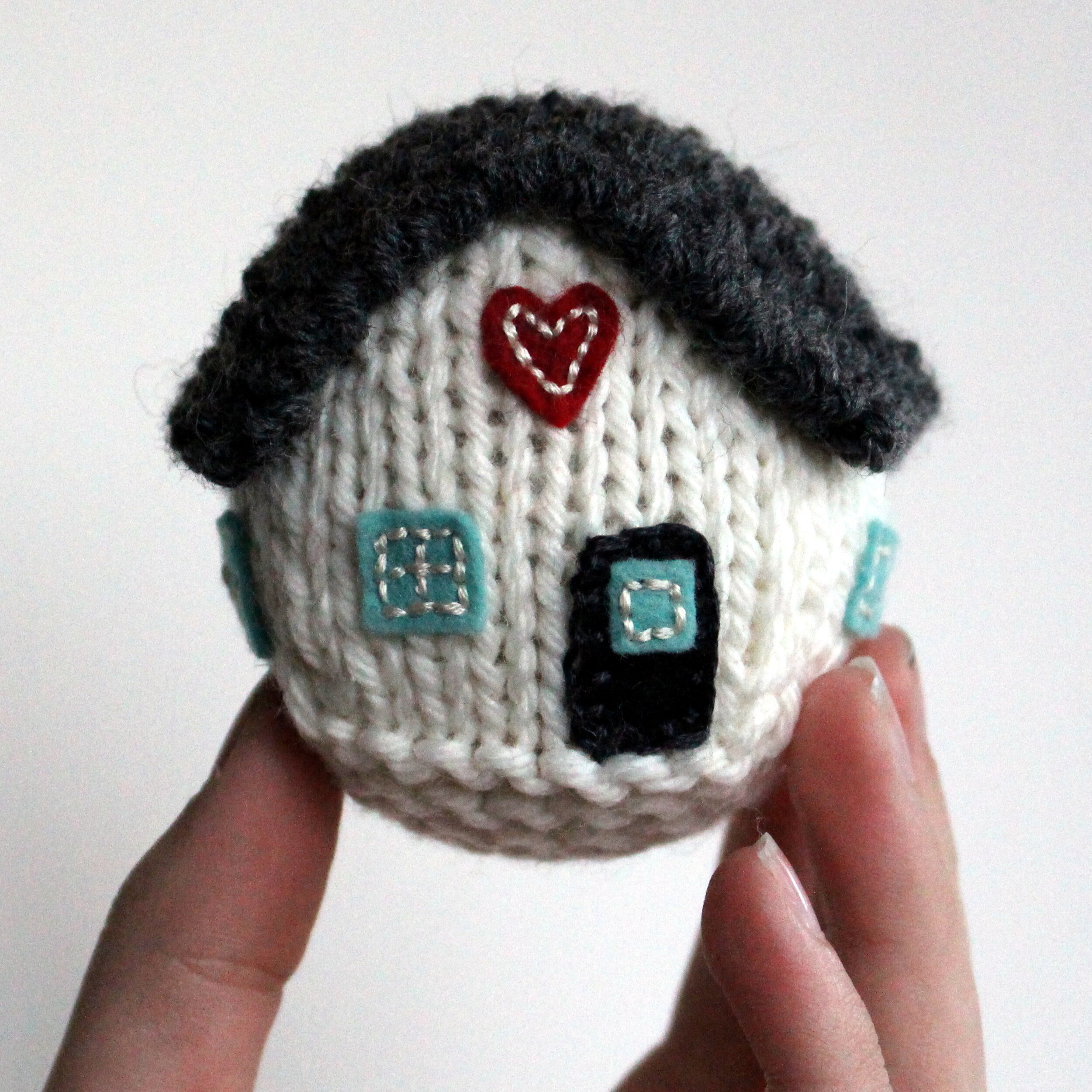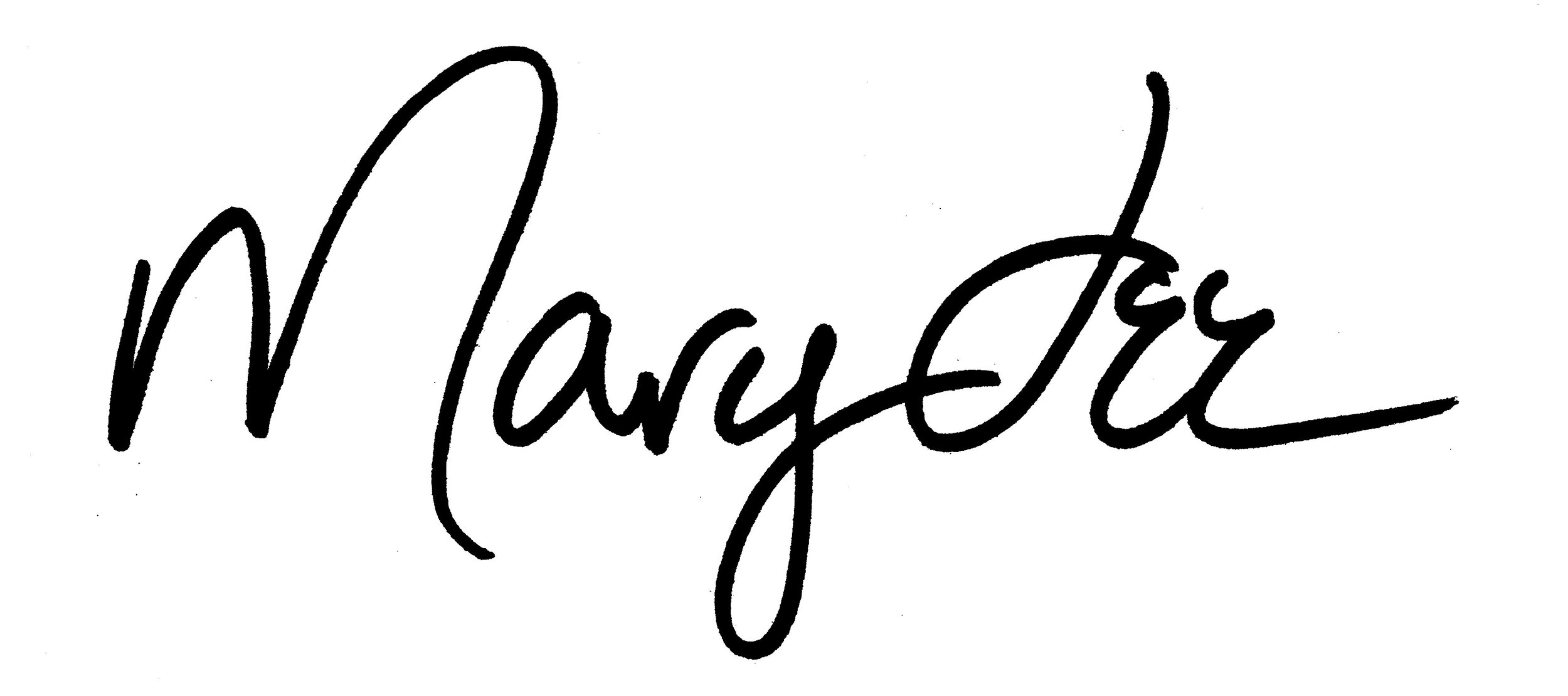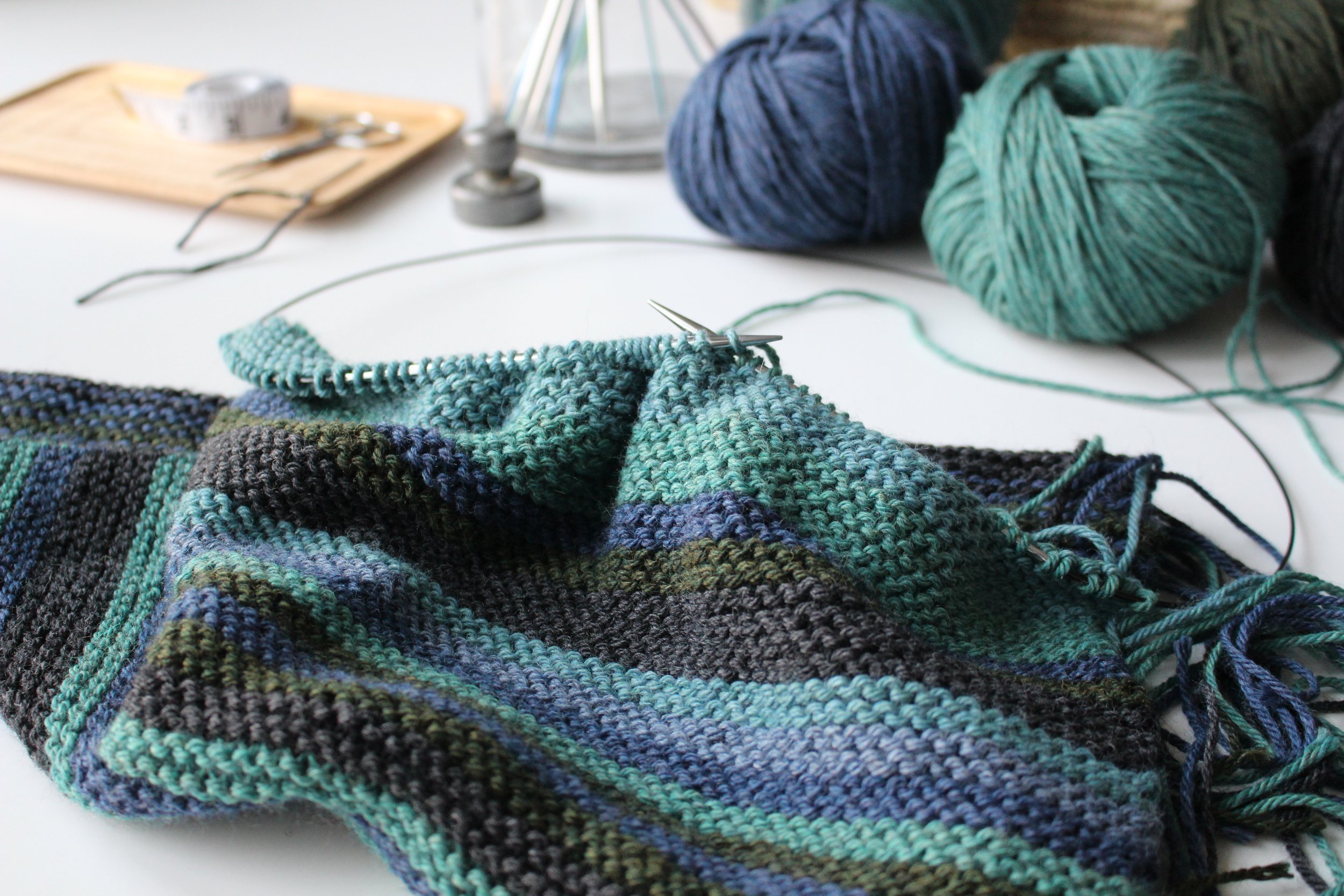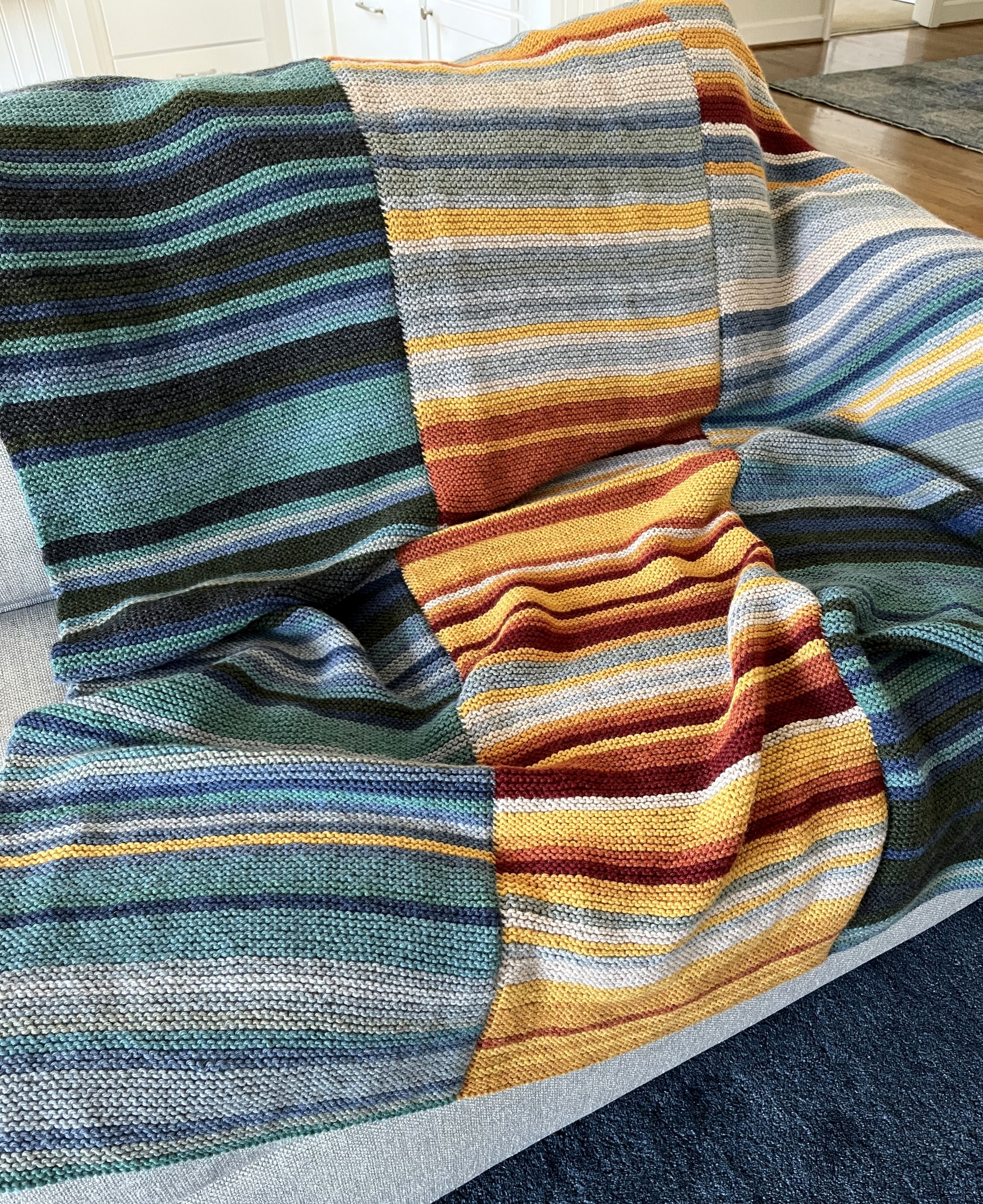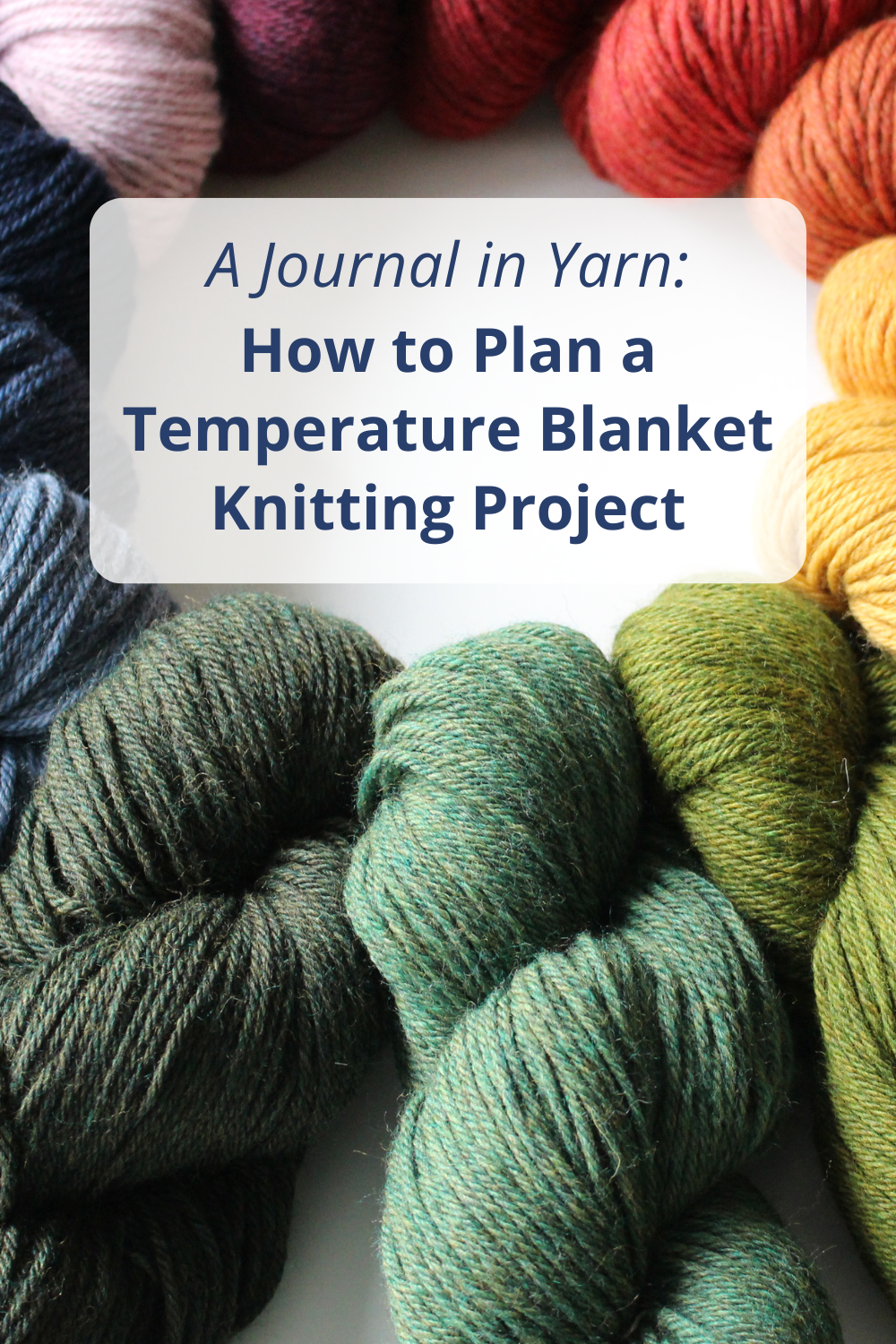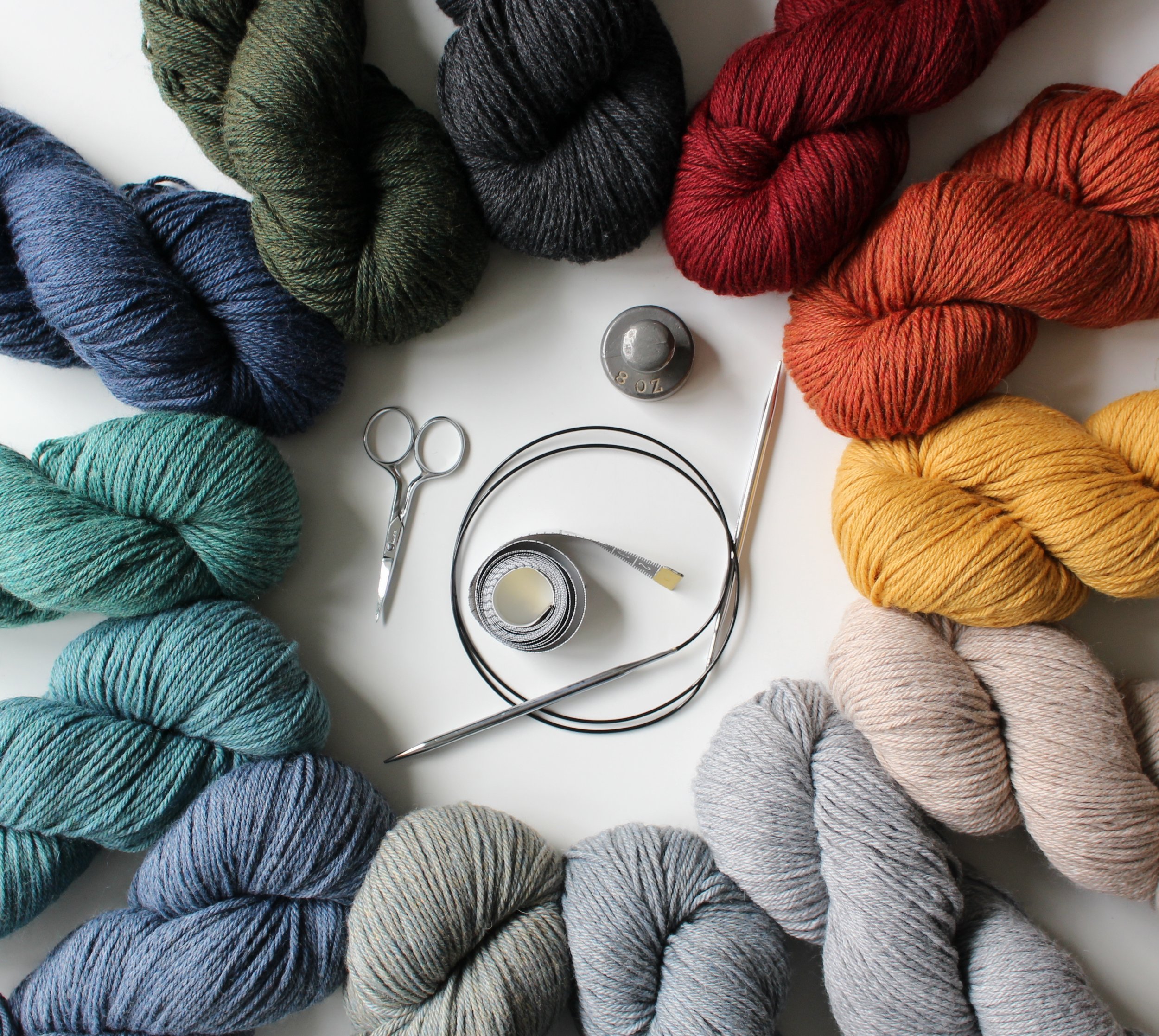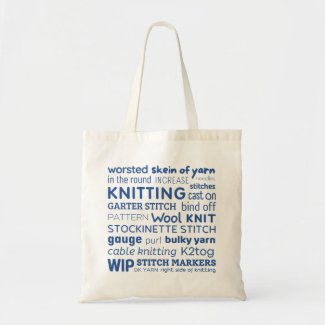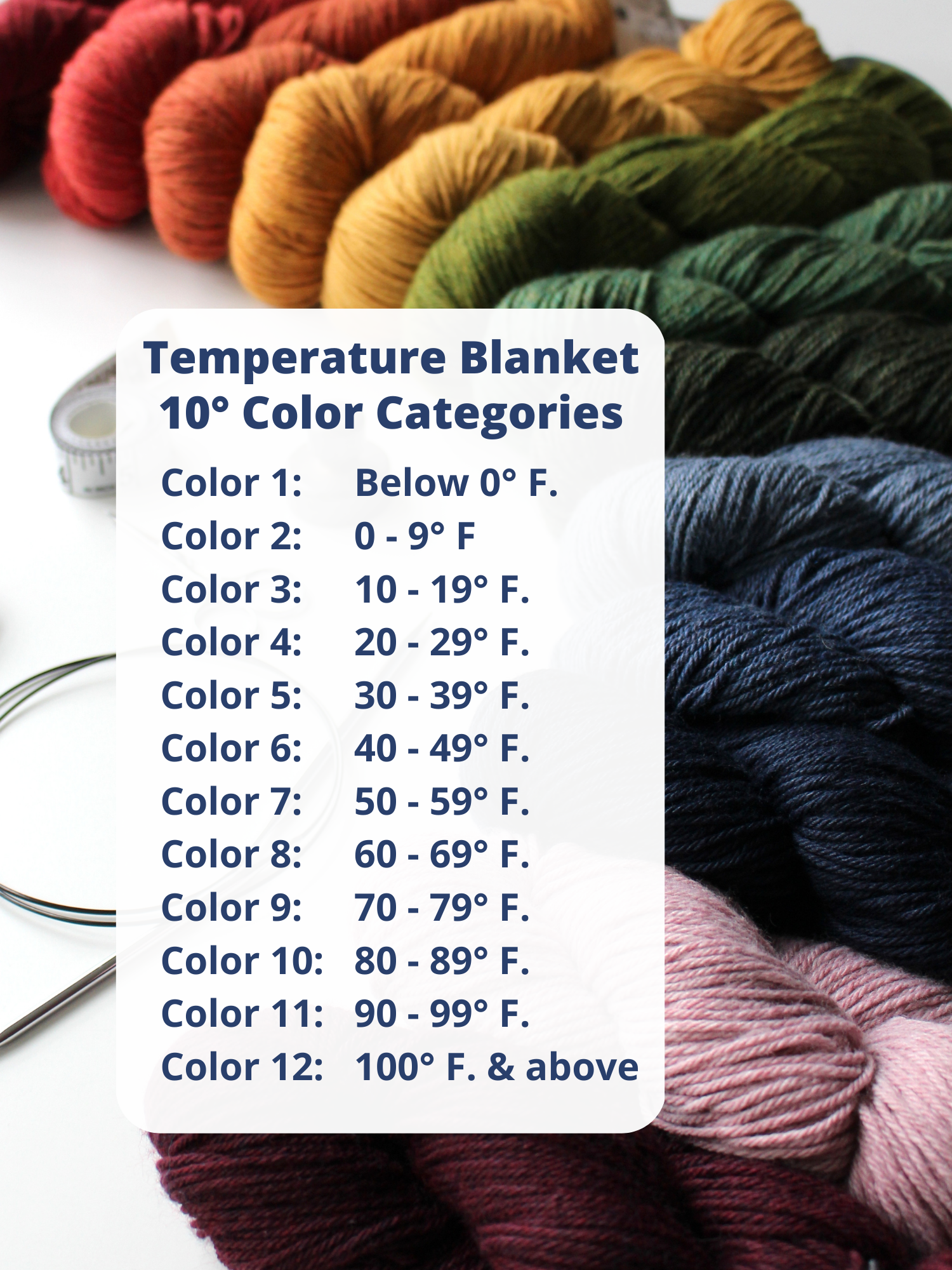A Journal in Yarn: How to Plan a Temperature Blanket Knitting Project
At the end of last year, a knitter sent me an email asking for help adapting one of my blanket knitting patterns for a temperature blanket knitting project. After doing a bit of math, I shared a couple of ideas with her. Since then, I cannot stop thinking about knitting a temperature blanket!
In the last few weeks, I have filled half a notebook with sketches of pattern ideas, lists of yarn options, and lots of notes about things to consider when planning a temperature blanket knitting project. I’ve been day dreaming about various color combinations… using 12 or 13 yarn colors to represent the temperatures through the year here in Kansas City. (We experience many hot summer days and occasional bitterly cold winter days with everything in between!)
If you are thinking about knitting a temperature blanket… below you will find LOTS of information to help with planning a project.
I’ve compiled all my notes about what to consider when planning a temperature blanket including: what is a temperature blanket (keep reading below if this concept is new to you!), fun ideas for temperature themed blanket projects, things to consider when selecting yarn, yarn suggestions, ideas for selecting yarn colors, how to track the temperature for your location and things to consider when picking temperature categories for each yarn color.
Towards the bottom of this blog post there are links to download my FREE temperature blanket planner and my FREE temperature blanket yarn color card. Keep reading! The links for the free PDF printable planner and yarn color card are towards the bottom of this blog post.
Knitting a temperature blanket is a fun way to document the weather conditions for your location for one year. I’m knitting a temperature blanket using the daily high temperatures in Kansas City for 2022. I love how it looks so far! Click here to get the details on this project and my free PDF temperature blanket knitting pattern.
MY FIRST TEMPERATURE BLANKET KNITTING PROJECT:
If you would like to see how I am making my first temperature blanket… click here. You’ll find all the details and specific instructions on how to knit a cozy garter stitch throw with worsted weight yarn.
You can also see updates on this project on my Ravelry project page.
APRIL 2023 UPDATE: I finished my first temperature blanket knitting project and I’m thrilled with the results!
I finished knitting my 2022 temperature blanket! I love how this three paneled blanket project turned out. The daily high temperatures are represented in 14 colorways of Berroco Vintage worsted yarn. Click here to get all the details on how I made this blanket.
WHAT IS A TEMPERATURE BLANKET?
A temperature blanket is a journal in yarn. More specifically, it’s a weather journal in yarn. Makers use knitting or crochet to create a blanket documenting the daily temperature for one calendar year (usually January 1 – December 31) for a chosen location using an assortment of yarn colors.
The maker selects a set of yarn colors… often 10 – 12 colors but sometimes more than 20… assigning one yarn color for a specific range of temperatures. A segment of the blanket is knit (or crocheted) for each day of the year using the yarn color representing the high, average and/or low temperature for the date. (I’m using the high temperature for my project.)
For example, a knitter selects a set of 10 yarn colors in an assortment of colors and assigns each color to a 10° increment of temperatures. When starting the project, if the high temperature on January 1st is 42° F., the knitter uses the green yarn assigned to 40 - 49° and knits one segment of the blanket. On January 2nd the high temperature is 35° F. so the knitter uses the blue yarn assigned to 30 - 39° to knit the next segment of the blanket. This sequence continues for each day of the year finishing on December 31st.
Some makers work on their blanket every day through the year and others knit the previous days in batches… such as knitting the prior seven days every Sunday evening. (And, others may get behind and not finish their blanket until the following year… but that is OK!)
Makers often refer to their blanket by the year it was made… such as “My 2023 Temperature Blanket”.
Save this image to your Pinterest knitting board for future reference!
WHEN TO START AND OTHER IDEAS FOR A TEMPERATURE BLANKET PROJECT:
Many makers start knitting their temperature blanket with January 1st and record the daily temperatures with yarn and stitches for one calendar year ending with December 31st. Of course, it’s perfectly fine to dive in and start on a temperature blanket mid-year! You can still begin with the temperature on January 1st.
However, that is not the only way to work a temperature blanket. Some other ideas include:
Start with the date you cast on the project (any time mid-year) and work on it for 365 days.
Start with the date a baby is born and knit the blanket through their first year of life. That would be a special first birthday present! (Use DK weight yarn to adapt my Free Temperature Blanket knitting pattern and make the blanket about 37” x 48”.)
Start with the date of a wedding and present the finished blanket as a first anniversary gift.
Start with the date of moving into a new home.
Make a temperature blanket using the weather data for your hometown or a location that is meaningful to you or the recipient of the blanket.
Incorporate your travels through the year by using the temperature for where you are each day… whether you are at home or visiting another city.
Use historical weather data for a year that marks a special event such as a wedding, birth year, graduation, etc.
Instead of temperature, track another weather stat like humidity, wind speed, the appearance of the sky (bright blue, overcast, dark & stormy, snowing, etc.) or the “feeling” of the day.
There isn’t “one way” to make a temperature blanket! Be creative and enjoy making your one-of-a-kind blanket project.
SELECTING YARN FOR A TEMPERATURE BLANKET KNITTING PROJECT:
Things to consider when selecting yarn:
Color Choices – Choose a yarn that offers color choices that appeal to you. One of the main reasons I picked Berroco Vintage Worsted (SHOP: Jimmy Beans Wool | Knit Picks) for my temperature blanket project is the more than 90 attractive colorways offered. That allows for many color combinations for a temperature blanket! See more below under “Pick Yarn Colors”.
Fiber Content – A blanket can be knit with acrylic, superwash wool, 100% wool, wool blend yarns or other fibers. What is your preference on fiber content? Do you want an easy care yarn? If so, you might prefer machine washable yarns. See my blog post about worsted weight yarns for blanket knitting for lots of yarn suggestions.
Good Stitch Definition - Pick a yarn with good stitch definition that will show off your stitches. I do not recommend chenille yarns.
Yarn Weight - If you are using a knitting pattern you most likely should use the yarn weight required for the pattern. If you are creating your own plan for a temperature blanket, worsted / Aran #4 weight or DK #3 weight yarn are good options for blanket knitting… and for representing 365 days in a year.
Price – Select a yarn that fits your budget. Buying 10 or more skeins of yarn in an assortment of colors can be a significant cost for starting the project. If you need to purchase more than one skein of some yarn colors that will obviously add to the cost. Below are a few yarn options with various prices.
Availability – Pick a popular, easy to purchase yarn in case you need more of a yarn color mid-way through the project.
Stash Yarn - If using yarn you have on hand, it’s best to use all the same weight of yarn. Choose to use either DK, worsted or Aran weight yarn. Then evaluate if you will have enough of each color to complete the blanket. Or, purchase additional yarn that works with your stash yarn.
Maybe there’s a yarn that you have loved using for previous knitting or crochet projects. If it “checks all the boxes” to work for this project that’s a great place to start when shopping for yarn.
If you aren’t sure what yarn to use… see yarn suggestions below!
WORSTED WEIGHT YARN SUGGESTIONS FOR KNITTING A TEMPERATURE BLANKET:
After considering many options, I decided to use Berroco Vintage worsted #4 weight yarn for my temperature blanket project. It’s a very nice quality yarn that is available in a gorgeous selection of more than 90 colorways. The beautiful assortment of yarn colors are what sold me on using this yarn!
These Berroco Vintage worsted colorways are (from lower left to right): Twilight, Breezeway, Jalapeno, Acai, Douglas Fir and Charcoal.
Berocco Vintage has a soft, pleasing texture with great stitch definition. It’s a blend of 52% acrylic, 40% wool and 8% nylon with 218 yards per skein. Machine washable and lay flat to dry.
SHOP FOR BERROCO VINTAGE YARN: At many local yarn shops | Jimmy Beans Wool | Knit Picks
For a lighter #3 weight yarn option check out Berroco Vintage DK at local yarn shops, Jimmy Beans Wool or Knit Picks.
OTHER WORSTED #4 WEIGHT YARNS FOR TEMPERATURE BLANKET KNITTING:
Cascade Yarns 220 Superwash (100% Superwash Merino Wool) – A ‘light worsted’ yarn that is labeled #3 weight / #4 weight on the Cascade website. The collection includes a remarkable 160+ colorways. For a heavier weight check out Cascade 220 Superwash Aran. Machine washable and dryable. Shop: Jimmy Beans Wool | Local Yarn Shops
Knit Picks Wool of the Andes (100% Peruvian Wool) – Classic worsted wool yarn available in more than 95 colorways. Hand wash and lay flat to dry. Shop: Exclusively from KnitPicks.com
Knit Picks Swish Worsted (100% Superwash Merino Wool) - With more than 45,000 projects shared on Ravelry this yarn appears to be one of the top three most actively used superwash wool yarns on the market. More than 45 colorways. Machine wash delicate cycle. Tumble dry on low. Shop: Exclusively from KnitPicks.com
Knit Picks Brava Worsted (100% Acrylic) - Economically priced, easy care yarn that is available in more than 45 colorways. Machine wash and dry. Shop: Exclusively from KnitPicks.com
Lion Brand Heartland (100% Acrylic) - Very soft with nice stitch definition. Available in 32 heathered and tweedy colorways named for American landmarks including U.S. National Parks. Machine wash gentle cycle. Shop: LionBrand.com
Lion Brand Basic Stitch Anti-Pilling (100% Acrylic) - Very soft to the touch with good stitch. More than 30 attractive solid colorways. Machine washable and dryable. Shop: LionBrand.com
See more yarn options in my blog post featuring more than 25 yarns for blanket knitting.
PICK YARN COLORS FOR YOUR TEMPERATURE BLANKET:
How many yarn colors do you want to use? If you want to keep things simple use 8 – 10 colorways. If you want lots of color changes use at least 12 or as many as 25 colorways. Those who live in a climate with lots of temperature changes might be inclined to try more colorways. Be sure to see the section below about “Planning Your Temperature Categories” since it’s a key part of selecting the number of yarn colors.
This rainbow gradient of Berroco Vintage worsted includes these colorways (starting with blue in lower left and working clockwise): Twilight, Acai, Dark Denim, Rose Quartz, Black Currant, Black Cherry, Red Pepper, Pumpkin, Marmalade, Butternut, Fennel, Spruce and Douglas Fir. Look for Berroco Vintage at many local yarn shops or shop online at Jimmy Beans Wool or Knit Picks.
What colors appeal to you? Makers frequently use a rainbow gradient of colorways similar to the colors used in weather forecast maps. Typically warm colors such as red and orange are used to represent hot temperatures and cool colorways such as purple, blue and green are used to represent colder temperatures. However, you can use different colors if you like! Choose a set of colorways that appeals to you and suits your home décor style. For example:
Choose a palette of dark tones to represent cold temperatures fading to medium tones for moderate temperatures and very light colorways for hot weather.
If you prefer dusty, muted tones… pick a collection of heathered, soft colorways.
If you want the blanket to coordinate with your family room… select colors that match.
The Berroco Vintage yarn colors I selected for my first temperature blanket knitting project are (starting with red in upper right and working clockwise): Black Cherry, Pumpkin, Butternut, Rye, Smoke, Overcast, Sage, Twilight, Breezeway, Jalapeno, Acai, Douglas Fir and Charcoal. After this photo was taken I added the Marmalade colorway for a total of 14 yarn colors.
These coastal inspired colorways would look lovely in a temperature blanket. These Berroco Vintage worsted colorways are (starting with cream in upper right and working clockwise): Mochi, Stone, Rye, Smoke, Overcast, Sage, Gingham, Breezeway, Twilight, Jalapeno, Spruce, Acai, Douglas Fir and Charcoal. SHOP: At many local yarn shops | Jimmy Beans Wool | Knit Picks
HOW MUCH YARN IS NEEDED TO MAKE A TEMPERATURE BLANKET?
This is the most difficult question to answer! The total amount of yarn needed to knit a temperature blanket depends on the style or pattern you are using for the blanket, how large the finished blanket is expected to be, the weight of the yarn selected (worsted, DK, etc.), knitting gauge (number of stitches & rows per 4”), as well as the number of yarn colors used… and how the weather plays out. There are so many variables!
Click here to see my blog post with a specific plan for knitting a 45” wide x 58” long garter stitch temperature blanket. The blog post includes an estimate for how much yarn is needed for the project.
If you are making your blanket as the year progresses, it’s impossible to predict exactly what the temperatures will be and how much yarn will be needed in each colorway to represent your temperature categories. Doing some research in advance can help with planning. See more details below.
OTHER BLANKET KNITTING PROJECT OPTIONS:
Do you prefer a more predictable project? Not sure you want to commit to working on a blanket for an entire year? If so… see my collection of blanket knitting patterns for DK, worsted, bulky and super bulky yarn.
Shop my knitting patterns here on my website, Ravelry or Etsy.
HOW TO TRACK THE TEMPERATURE FOR YOUR LOCATION:
First, decide if you are going to track the high, average and/or low temperature to represent in your knitting project. Some makers incorporate the high and low temperature. Some ambitious projects incorporate the high, average and low temperature. I decided to use the high temperature for each day… to keep things sort of simple!
Next, decide how you are going to get your temperature information. It’s a good idea to use the same source for temperature data each day. If you like to watch the local news in the evening every day, perhaps that is your source to record the reported high temperature. Or, if you have a thermometer outside your house you could check it each afternoon at the same time. (Perhaps you have a handy thermometer that tracks the high and low outside temperature for the day!)
I looked at a couple of websites for U.S. weather and have decided to use the National Weather Service website. I like that it’s possible to look up an entire month of weather data. That is very helpful when knitting a blanket based on a prior year (there’s extensive historical data!) or if I want to look up all the temperatures for last month to catch up on my project.
Here’s the link to the U.S. National Weather Service: https://www.weather.gov/wrh/climate
Then… click on your area on the map do be directed to the local weather forecast office. Under the blue “NOWData” button select “Location” to pick the nearest location, and under “Product” click “daily data for a month”, and under “Options” select the month and year. Finally, under “View” click “go”.
Another option that may offer more worldwide weather data is The Weather Channel at www.weather.com. Here’s a link to the almanac page. At the top of the page search your desired location.
Fifty Four Ten Studio has a Zazzle Shop that offers cute, thoughtful gifts for knitters including knitting project bags, coffee mugs, inspiring journal notebooks, and more! I’ve had so much fun designing graphics for my Zazzle Shop products. Click here to visit the Fifty Four Ten Studio Zazzle Shop. Thanks for taking a minute to check it out!
PLANNING YOUR TEMPERATURE CATEGORIES:
Before picking your temperature categories… I highly recommend doing some research on the historical temperature data for your location. Look at the temperatures for last year. Get an idea for what the range of temperatures is throughout the year.
Note: Since I live in the U.S. I am referring to all temperatures in Fahrenheit (F.). All of the thoughts below would apply to measuring temperature in Celsius (C.).
I live in Kansas City in the center of the U.S. The high temperature can range anywhere from 0° F. in the winter to above 100° F. in the summer. It’s a huge temperature range! I looked at all the weather data for 2022 for Kansas City and found that approximately 50% of the days had high temperatures of 70° F. or above. This sort of surprised me! And, it’s something I need to take into account if I want to incorporate lots of yarn colors in my temperature blanket project. Why? Because if I use 10° increments for the temperature then approximately 50% of the blanket would be made with only 4 out of my 14 colorways (representing 70° – 99°). And, there’s a good chance that I would run out of those four colorways.
Another big thing to consider is how many different yarn colors do you want to use? If you want lots of color variation then you will want more temperature categories.
Here are three options for assigning temperature categories:
OPTION #1: 10° COLOR CATEGORIES
If you prefer to keep it simple and live in a climate where there is a wide range of high temperatures through the year… you can use 10° F. increments to assign your yarn colors.
Advantages: It keeps things simple and you don’t have to do a lot of research in advance.
Disadvantages: You may have less variety of yarn colors. For example, if the high temperature is between 70° - 99° F. about 50% of the year… then half of the blanket would be made with only three yarn colors. And, since you will need a lot of those yarn colors plan ahead by buying extra of the frequently used yarn colors. You don’t want to run out partway through the project!
OPTION #2: 5° COLOR CATEGORIES
If you live in a climate where the high temperature has a narrow range (ex. most of the year the high temperature is between 60° - 95° F.) then consider using 5° increments. For example:
Advantages: Simple to plan and could incorporate a wide range of yarn colors.
Disadvantages: If you live in a place where it is frequently “sunny and 75” you might be using two colors most of the time. If that’s the case you could adapt this plan by making 2° or 3° increments for temperatures between 60° - 80° F. so you can incorporate more yarn colors.
OPTION #3: CUSTOMIZE TEMPERATURE CATEGORIES
Make a custom temperature and yarn color chart based on the weather for your location. Do some research for the high temperatures in your location by looking up the data for a prior year.
I researched the daily high temperatures for Kansas City for 2022 on the National Weather Service website. Details in “How to Track the Temperature for Your Location” section above.
It was pretty easy to search each month of 2022 and get an entire list of the daily high temperature for Kansas City. I copied and pasted each month of data to one spreadsheet… compiling 365 days of daily temperatures. Then, I sorted the high temperatures into numerical order. That’s how I discovered that approximately 50% of the year the high temperature was 70° F. or above.
Even though we experience a wide range of temperatures in Kansas City… most days are on the warmer end of the temperature range. I realized that I wanted to take that into account when planning my temperature blanket so that each of the 14 yarn colors I selected would be used in a balanced way.
Here is the plan for the temperature categories for my temperature blanket…
For my first temperature blanket knitting project I am using the daily high temperature. I researched last year’s high temperatures in Kansas City and then allocated the temperature categories for my project based on the weather in our area. For my project, I am using Berroco Vintage (SHOP: Jimmy Beans Wool | Knit Picks) worsted yarn in these colorways (starting with the dark red on the right): Black Cherry, Pumpkin, Butternut, Rye, Smoke, Overcast, Sage, Twilight, Breezeway, Jalapeno, Acai, Douglas Fir and Charcoal. After taking this photo I added the Marmalade colorway to make a total of 14 yarn colors.
Note that the temperature categories are not perfectly “even”. I divided the warm categories into 3 - 5° temperature ranges and the less frequent cooler days have 6° or more ranges. There were just 23 days in 2022 with a high temperature 32° (freezing) or below so I decided to make this one temperature category.
Obviously… the weather can vary from year to year! It’s impossible to predict exactly how many days will fall into each temperature category. When working a day-to-day temperature blanket… the weather will determine how the colors are used for your project.
Here are all the free PDF printables to help you plan your temperature blanket project!
MAKE A YARN COLOR CARD:
Once you have decided on temperature categories and a set of yarn colors for your temperature blanket project make a color card to keep track of all the details.
GET THE FREE YARN COLOR CARD: Click here to download my FREE Temperature Blanket Yarn Color Card PDF printable.
Print on heavy card stock. Use scissors or a paper cutter to cut along the vertical gray line. Write your temperature ranges and the names of each yarn color on each line. (Here’s the nice pen that I used.) Use a hole punch to make holes where indicated by the circles.
This visual reference will be a quick reminder of which yarn color you assigned to each temperature category.
Attach a sample of each yarn color by cutting two 8” pieces of each color. With two pieces of matching yarn held together, fold them in half and feed through hole to secure on the card next to the appropriate color name.
KEEP A RECORD OF THE DAILY TEMPERATURES:
Good record keeping will help make this project go smoothly! Unless you are very methodical in knitting a section every day, it can be pretty easy to forget where you left off on the project.
GET THE FREE TEMPERATURE BLANKET PLANNER: Click here to download my free Temperature Blanket Planner PDF printable.
The checklist includes a place to track the day of the year, date, temperature and yarn color associated with the temperature. There’s also a handy spot to check off each date as you complete the knitting (or crochet).
Print one page of the Temperature Blanket Planner for each month of the year. I’m using card stock to print my planner pages.
Keep all your planning pages in a notebook, a clear document pouch, or on a clipboard in your knitting bag.
Be sure to keep a pen or pencil handy to check off each day as you complete your knitting! And, keep a small pair of scissors with your project for cutting yarn.
Looking for more details on how to knit a temperature blanket?
Click here to see my blog post with specific ideas including how many stitches to cast on, knitting needle size, approximate yardage needed and much more.
SHARE YOUR PROJECT
If you decide to start a temperature blanket I would love to see what you are making!
Instagram - Share a photo of your project on Instagram with the hashtag #temperatureblanket #temperatureblanket2023… and tag me with @fiftyfourtenstudio and #fiftyfourtenstudio. (Keep in mind that if your Instagram account is private I will not be able to see your photo.)
Ravelry Group - Share your project on the Fifty Four Ten Studio Ravelry Group page.
Email - You can also email a photo of your project to Mary Lee at: FiftyFourTenStudio@gmail.com
I hope you find this blog post helpful if you decide to cast on a temperature blanket. It takes a bit of planning to get started on a temperature knitting project! My first temperature blanket project is underway and I love how it looks. Click here to see all the details on how I am making my temperature blanket and get the FREE PDF pattern.
Happy knitting!
Sign up for my Fifty Four Ten Studio newsletter! Click here to sign up. Expect to receive one or two newsletter emails per month. (I do not share email addresses with any other person or business.)
Here are links to a couple of newsletters from 2022.
December 2022 - My best selling patterns of the year.
February 2022 - Knitting for little ones.
